- Home
- J. M. Barrie
The Annotated Peter Pan (The Centennial Edition) (The Annotated Books) Page 7
The Annotated Peter Pan (The Centennial Edition) (The Annotated Books) Read online
Page 7
To celebrate their first wedding anniversary, the Barries returned to Switzerland in the summer of 1895 and enjoyed the elegant amenities of the Hotel Maloja and the fresh mountain air of the Engadine. On the first day of September, Barrie received word that his sister Jenann, who had been caring for their mother, had died suddenly. (She had been silently suffering from undiagnosed cancer for some time.) Just twelve hours before Barrie arrived in Kirriemuir, Margaret Ogilvy, too, passed away, and Barrie returned home to bury both sister and mother on Cemetery Hill. It was after his mother’s death that he wrote Margaret Ogilvy, by Her Son, J. M. Barrie. Barrie seems almost unique in taking the attachment to his mother so far as to write her biography, particularly since she had done nothing of great social or cultural distinction and since mourning seems to have been her most passionate pastime. The mother-son relationship had always been paramount, with all others relegated to the sidelines. Mary Ansell’s name was not mentioned at all in this exercise in maternal hagiography. It comes as no small surprise to learn that, despite some carping from the critics (the book was seen as exhibiting a “foetal complex”), Margaret Ogilvy sold well—nearly forty thousand copies rolled off the presses in Great Britain within a matter of weeks, with laudatory reviews and high sales in the United States as well.
With the publication of Sentimental Tommy in 1896, Barrie’s work took an even stronger biographical turn. Setting out to write a coming-of-age tale about a boy who is resettled from London back to Thrums, Barrie found himself so fascinated by the character that he felt compelled to move backward rather than forward. “When we meet a man who interests us, and is perhaps something of an enigma, we may fall awondering what sort of boyhood he had,” Barrie writes in the introduction to the novel. “And so it is with writers who become inquisitive about their own creations.” Intending to summarize the childhood of his character, he discovers that he, as author, was “loth to leave him, or perhaps it was he who was loth to grow up, having a suspicion of what was in store for him.” With this book Barrie revealed an idiosyncratic preoccupation with childhood that was particularly unusual in light of his success as a playwright who had addressed manners, morals, and marriage. Most adult writers become fascinated by coming-of-age stories or by the mysteries of adult behaviors, but Barrie saw adult characters as little more than opportunities for exploring the child that would become father to the man.
With Margaret Ogilvy and Sentimental Tommy behind him, Barrie made plans to travel to the United States, where he had a “roaring time,” meeting the theatrical producer Charles Frohman, a “Niagara of a man.” Frohman took an interest in Barrie’s play The Little Minister, which had opened at London’s Haymarket in 1897 to triumphant reviews. Barrie’s financial future was now secure, and Frohman himself was fully confident of a promising new alliance. With astonishing swiftness, fame and fortune had come Barrie’s way, finally leaving him with time for a range of favorite activities that had as much to do with play as with work.
Barrie now had plenty of time for walks in Kensington Gardens, and it was there, while walking Porthos, that the playwright encountered three boys, five-year-old George, three-year-old Jack, and Peter, still in a pram. Dressed in red tam-o’-shanters, the boys adored the St. Bernard who performed tricks with his master. They thrilled to the company of a man who could do amazing things with his eyebrows. “I alone of boys had been able to elevate and lower my eyebrows separately,” he boasted. “When one was climbing up my forehead the other descended it, like the two buckets in the well.” And he could tell stories—long, rambling tales that incorporated the boys into the adventures and showed them facing down and triumphing over evil adversaries.
It was most likely on New Year’s Eve 1897 that Barrie met Sylvia Llewelyn Davies and her husband, the barrister Arthur Llewelyn Davies, at a dinner party given by the famous London solicitor Sir George Lewis. Sylvia was not only the mother of the boys but also the sister of the actor Gerald du Maurier and daughter of the writer and artist George du Maurier. A great beauty, she was always described as having unconventional good looks: “Without being strictly pretty, she has got one of the most delightful, brilliant sparkling faces I have ever seen. . . . She has pretty black fluffy hair, but her expression is what gives her that wonderful charm, and her low voice,” as one contemporary put it.25 J. M. Barrie was “instantly conquered,” as noted earlier.26 And then came the discovery that the author had already encountered Sylvia’s children in Kensington Gardens, where Barrie and Porthos constantly attracted the attention of children with their antics. Did her sons wear real red tam-o’-shanters? Yes, and they were made from their great-grandfather’s judicial robes.
Arthur Llewelyn Davies, 1890. (Beinecke Rare Book and Manuscript Library, Yale University)
Barrie’s relationship with the Llewelyn Davies family began as a romance—his infatuation with Sylvia and his affection for the boys—and ended in tragedy, with the death of the boys’ parents and the adoption of “the Five.” In between, the writer and dramatist in Barrie found ways to process what he—a married man with no children of his own—was experiencing. In The Little White Bird, first published in 1902, he gave literary expression to his affective life, documenting the pathological aspects of his desire to father a child by proxy. In the play Peter Pan, performed just two years later, he finally exorcized the demons (at least in his work), in large part through his success as father figure to the Llewelyn Davies boys and, as important, through the delivery of a boy who will never grow up.
Let us begin with The Little White Bird—in many ways Barrie’s most deeply personal work. While writing it, Barrie kept notebooks in which he jotted down random remarks (“the queer pleasure it gives when George tells me to lace his shoes, &c.”) and revealed that his greatest joy was to be taken for the father of the Llewelyn Davies boys—a joy shadowed by the fear that it might be revealed he was in fact not. The narrator of The Little White Bird is an eccentric bachelor, a thinly disguised version of J. M. Barrie, who is always slipping back into the world of childhood, liquidating the boundary between fantasy and reality, and playing with fantasies about fatherhood. (“My white bird a book,” he wrote when Sylvia Llewelyn Davies was pregnant with her fourth child, “hers a baby.”)27
Sylvia Llewelyn Davies with George and Jack, 1895. (Beinecke Rare Book and Manuscript Library, Yale University)
Barrie’s bachelor does not have children of his own, but he spends a good deal of time with a boy named David, the son of a couple whose reconciliation and marriage he engineers. Mary may be the mother of David, but the narrator has endowed her child with a new identity through his stories and games. His attachment to the boy cannot but seem morbid and teetering on the edge of pedophilia to our eyes. Here is a partial description of an overnight visit by David:
I knew by intuition that he expected me to take off his boots. I took them off with all the coolness of an old hand, and then I placed him on my knee and removed his blouse. This was a delightful experience, but I think I remained wonderfully calm until I came somewhat too suddenly to his little braces, which agitated me profoundly.
I cannot proceed in public with the disrobing of David. Soon the night nursery was in darkness but for the glimmer from the night-light, and very still save when the door creaked as a man peered in at the little figure on the bed.
After the narrator turns in, David awakens and moves from his own bed to that of his adult friend. We are, to be sure, in the realm of fiction, but the description of boy and man together remains disturbing, even if it did not seem to have shocked Barrie’s contemporaries with its open description of a boy’s desire for comfort at nighttime from an adult who is not a parent and who is deeply overinvested in the child’s movements at night:
Without more ado the little white figure rose and flung itself at me. For the rest of the night he lay on me and across me, and sometimes his feet were at the bottom of the bed and sometimes on the pillow, but he always retained possession of my finger, and occasion
ally he woke me to say that he was sleeping with me. I had not a good night. I lay thinking. . . . of how I had stood by the open door listening to his sweet breathing, had stood so long that I forgot his name and called him Timothy.
Timothy is the name of the narrator’s made-up son, a boy who is given an early fictional death to enable his father to donate clothing to David’s parents. The last chapter of The Little White Bird takes us into a dizzying series of reversals and mirrorings, with the narrator writing the novel that David’s mother had planned and then “aborted,” and David’s mother asserting that the narrator’s book is in fact about Timothy rather than David. Each has conceived a child, with the mother possessing “the substance,” and the narrator “having the shadow.”28 Maternity and paternity are pitted in a race against authorship, with parenthood losing out decisively when David decides to introduce his mother to the narrator, the man he calls “Father.”
The Little White Bird proved therapeutic for Barrie in its eccentric expression of fantasies about playing father to a child. It was also the book that enabled him to conceive of a “lost” boy who runs away from home in order to avoid growing up: “His parents find him in a wood singing joyfully to himself because he thinks he can now be a boy for ever; and he fears that if they catch him they will compel him to grow into a man, so he runs farther from them into the wood and is running still, singing to himself because he is always to be a boy.”29 The “wandering child” who wants to be “a boy forever” appears in The Little White Bird as Peter Pan who, at the tender age of seven days, “escapes by the window” and flies back to Kensington Gardens. On outings with George and Jack, Barrie described this boy, who would eventually migrate from The Little White Bird into Peter Pan in Kensington Gardens. That volume was dedicated to Sylvia and Arthur Llewelyn Davies and to “their boys—my boys.”
The man who was still a boy had finally found a way to become a father. In Tommy and Grizel, the sequel to Sentimental Tommy, Barrie bemoaned the fact that “he was still a boy, he was ever a boy, trying sometimes, as now, to be a man. . . . He was so fond of being a boy that he could not grow up.”30 Is it any wonder that there might be real marital trouble in the life of a man who creates a character who declares: “I seem to be different from all other men; there seems to be some curse upon me. I want to love you, dear one, you are the only woman I ever wanted to love, but apparently I can’t”?31 Mary was to protest some of the passages in Tommy and Grizel and even insisted on deleting a few, among them: “What God will find hardest to forgive in him, I think, is that Grizel never had a child.”
Mary may never have had children, but James Barrie made sure that he would be surrounded by them all his life, first by the Llewelyn Davies brothers and then by the dream child he created in the many variants of the Peter Pan story. It is to that story and its origins that we must turn for the therapeutic and creative alternatives to the pathologies expressed in The Little White Bird.
The Llewelyn Davies brothers: George, Jack, and Peter. (Beinecke Rare Book and Manuscript Library, Yale University)
In 1901, the Barries decided to spend their summer holiday at Black Lake Cottage in Surrey. Not coincidentally, the Llewelyn Davies family had let a farmhouse at Tilford, and the boys were able to spend their days on the shores of the lake with Barrie. Black Lake Island was turned, with little effort, into a desert island filled with pirates, redskins, and wild animals. Barrie recorded it all with his camera, and, one day, he had the idea of creating a book that would be bound to resemble an adventure story for boys. Of the two copies that were printed, only one exists today—Arthur Llewelyn Davies lost his on a train (“doubtless his own way of commenting on the whole fantastic affair,” as his son Peter later put it).32 The Boy Castaways of Black Lake Island, being a record of the terrible adventures of the brothers Davies in the summer of 1901 faithfully set forth by Peter Llewelyn Davies was “published” in 1901 and contained no text—only sixteen chapter headings and thirty-six photographs with a legend under each. Its adventures were framed by a description of the boys’ mother and by “Advice to Parents about bringing up their Children.” The pictures show the boys at play, and the one and only grown-up to be found in the book’s pages is a sinister-looking J. M. Barrie, also known as Captain Swarthy.
The red and black cover to The Boy Castaways is based on a photograph of three of the boys wielding improvised weapons—spades and other gardening tools. Bows and arrows were also in use on the “island,” along with knives, and by the end of the summer Jack’s lip was split by an arrow from George’s bow, much to the alarm of their mother, who insisted on replacing the weapons with less dangerous implements. The chapter titles take the boys from home (“Our amusing Mother—her indiscretions”) through a “fearful hurricane” that culminates in the wreck of their ship, named Anna Pink. Marooned on the island, the boys make a hut, discover pirates, board their ship, produce a “Holocaust” of pirates, narrowly escape a tiger, enjoy the “pleasures of tobacco,” and set sail for England.
J. M. Barrie, 1901. (Beinecke Rare Book and Manuscript Library, Yale University)
Barrie became Uncle Jimmy to the boys, a droll, avuncular celebrity who not only choreographed their summer escapades on Black Lake Island but also introduced their mother to the frothy pleasures of a lavish lifestyle. In 1902, Sylvia accompanied Barrie and his wife to Paris, “living in great splendour” and celebrating what Arthur called “the huge success of Barrie’s new play and new book.”33 The boys, meanwhile, were growing up, and discovering what Barrie called “the tree of knowledge”: “Sometimes you swung back into the wood, as the unthinking may at a cross-road take a familiar path that no longer leads home; or you perched ostentatiously on its boughs to please me, pretending that you still belonged.”34
While Sylvia Davies was pregnant with her fifth child, Barrie sat down at his desk to begin a play with the heading “ANON.” He drew a detailed stage set called “The Night Nursery of the Darling Family” and began to imagine a strange little boy who slips into the nursery and takes the Darling children to a land resembling the world of The Boy Castaways of Black Lake Island.
Manuscript of act 1 for the planned play Anon, set in the night nursery of the Darling family, 1903. (Beinecke Rare Book and Manuscript Library, Yale University)
Although Barrie claimed to be unable to recall writing Peter Pan, he had, in a sense, been writing it all his life, for the play stitched together facts and fantasies from his own childhood games and adult experiences. As a boy, he loved reading tales about desert islands and pirates, and he retained a lifelong love of Robinson Crusoe, which he had first read with his mother. Fascinated by Stevenson’s Treasure Island, he was even more taken with Ballantyne’s Coral Island and felt the urge to “stop everybody in the street & ask if they’ve read The Coral Island. Feel sorry for if not.” But literary influences loomed no larger than inspiration from real life, and in the Darling household we see mirrored, faithfully at times and at times in parodic form, Arthur and Sylvia Llewelyn Davies and their children.
Just how closely Barrie modeled Mr. and Mrs. Darling on the Llewelyn Davies couple becomes evident from the description of the household economy by their son Peter Davies. He notes “the simplicity of the way the family lived: hardly a drink . . . no car or carriage, practically no restaurants to eat and drink expensively in, of course no wireless or refrigerators or other gadgets, and no serious school bills. I think A. Ll. D. [Arthur Llewelyn Davies] always had lunch at an A.B.C. for about 6d., and I take it S. [Sylvia] made most of her own lovely clothes. . . . What emerges is that they concentrated on essentials . . . and evolved, on a small income, something as near to perfection in the way of family life as could be wished.”35
Sylvia Llewelyn Davies with Jack, Peter, and George, 1901. (Beinecke Rare Book and Manuscript Library, Yale University)
The first draft of the stage version of Peter Pan was written in less than four months. The play remained a work in progress, with endless revision and recas
ting as Barrie reimagined a number of scenes and the ending in particular. Odd as it may seem to us today, the entire enterprise was considered a wild gamble. When Barrie read the script to his friend the actor Beerbohm Tree, the reaction was less than enthusiastic. In a mild panic, Tree sent the following message to Charles Frohman, a man who stood to lose colossal sums of money from a production of the play: “Barrie has gone out of his mind. . . . I am sorry to say it but you ought to know. . . . He’s just read me a play . . . so I am warning you. I know I have not gone woozy in my mind because I have tested myself since hearing it but Barrie must be mad.”36
Nina Boucicault’s costume for the first production of Peter Pan. Peter Pan has not always worn green, and costumes and illustrations before Disney’s Peter Pan reveal a variety of colors ranging from red through rust to brown. (Courtesy of Great Ormond Street Hospital Children’s Charity)
Frohman did not heed the warning. He was completely enamored of the “dream child” presented to him, and only one obstacle stood in the way of production: the title had to be changed. The Great White Father was renamed Peter Pan, and rehearsals began in earnest in October 1904 at the Duke of York’s Theatre in London.
With the renowned actress Nina Boucicault (daughter of the playwright Dion Boucicault) as a hauntingly enigmatic Peter Pan and the equally distinguished Gerald du Maurier as an edgy, sinister Captain Hook, the play won the hearts of the audience—mainly adult theatergoers on opening night. Frohman waited nervously in New York by the telephone and received, finally, the following message: “PETER PAN ALRIGHT. LOOKS LIKE A BIG SUCCESS.”

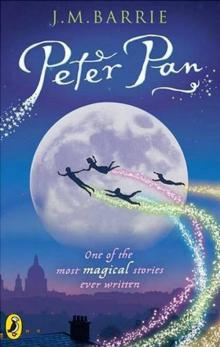 Peter Pan
Peter Pan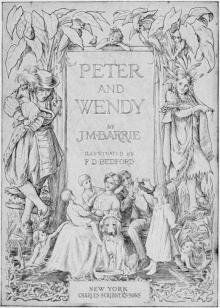 Peter and Wendy
Peter and Wendy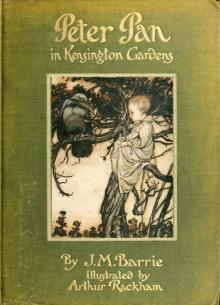 Peter Pan in Kensington Gardens
Peter Pan in Kensington Gardens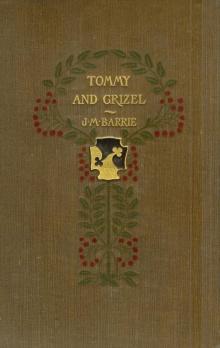 Tommy and Grizel
Tommy and Grizel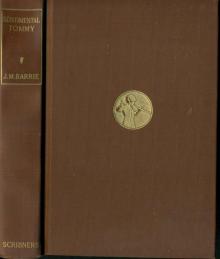 Sentimental Tommy
Sentimental Tommy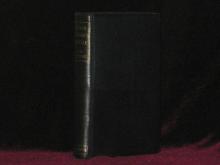 When a Man's Single: A Tale of Literary Life
When a Man's Single: A Tale of Literary Life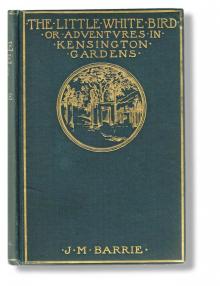 The Little White Bird; Or, Adventures in Kensington Gardens
The Little White Bird; Or, Adventures in Kensington Gardens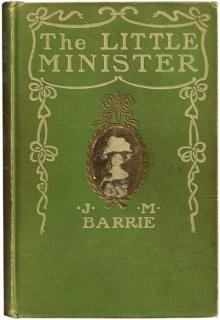 The Little Minister
The Little Minister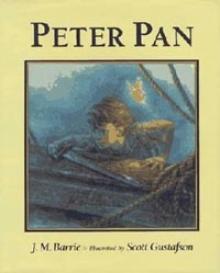 Peter Pan (peter pan)
Peter Pan (peter pan)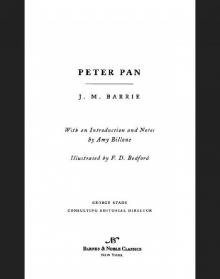 Peter Pan (Barnes & Noble Classics Series)
Peter Pan (Barnes & Noble Classics Series)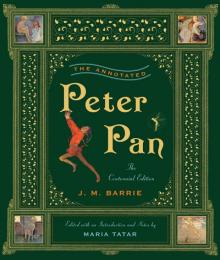 The Annotated Peter Pan (The Centennial Edition) (The Annotated Books)
The Annotated Peter Pan (The Centennial Edition) (The Annotated Books)